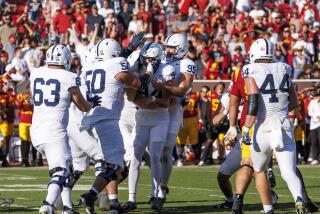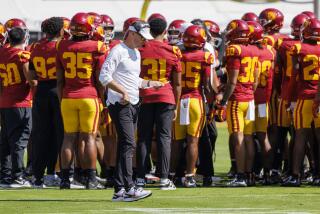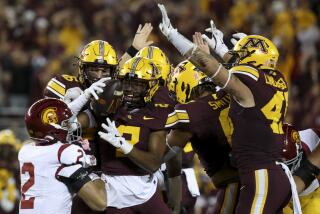Fatigue Becomes a Factor in Losing Streak
As USC looks for ways to get out of its three-game losing streak, the Pacific 10 book on how to play the Trojans continues to be simplified.
On offense keep USC running up and down the court as much as possible. When they have the ball the Trojans will often walk the ball up court and run a half-court offense to save energy. But opponents--particularly California and UCLA--did their best to turn games into track meets. The five or six players on which USC depends heavily started losing the zip in their legs midway in the second half.
On defense, drive to the basket often, either on the baseline or down the middle of the lane. With Sam Clancy, USC’s best shot blocker, idled by injury, teams have attacked USC’s inner defense with abandon.
“Throw the ball inside on them as much as you can,” Oregon Coach Ernie Kent said. “[USC] will defend you early but once you’re inside they don’t put themselves in jeopardy.”
Coach Henry Bibby knows the Trojans lack manpower. But he won’t let fatigue become a psychological crutch and insists the team will work through its slump.
“Guys get tired when they don’t make shots,” Bibby said. “I can say that because I played and I know what it’s like when you’re 0 for 10 or eight for 10. When I was eight for 10 I could play 40 minutes. If I was 0 for 10, 40 minutes felt like two hours.
“I know the fatigue they have in their minds is ‘I’m not playing well, then I get tired.’ That happens to all basketball players.”
More to Read
Go beyond the scoreboard
Get the latest on L.A.'s teams in the daily Sports Report newsletter.
You may occasionally receive promotional content from the Los Angeles Times.






